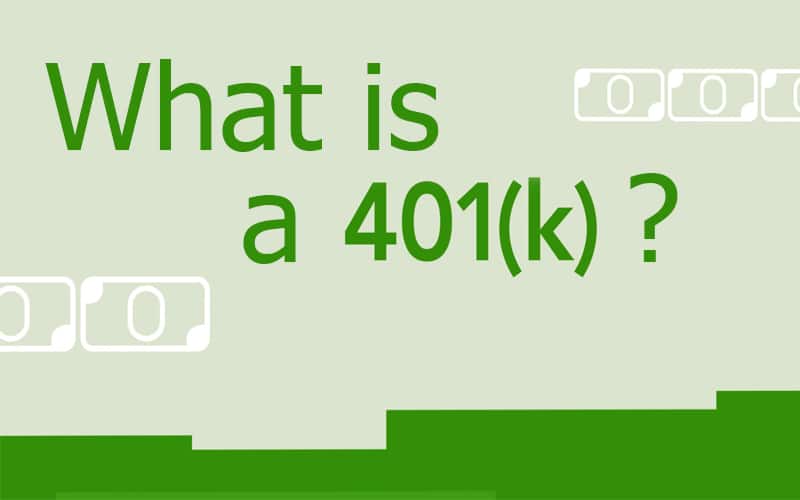A 401(k) is an employer-sponsored retirement plan that allows employees to save and invest a part of their wages before taxes. Employees don’t have to pay any taxes until they withdraw money from their accounts. As an employee, you can opt for investing the funds saved in your 401(k) account in one or more mutual funds that the plan offers or take distributions from the account to provide them with income in retirement.
How Does it Work?
This program is a defined contribution plan that means employees can decide how they want to contribute to the plan. Its name comes from the Internal Revenue Code that governs the plans. Generally, there are two main kinds of 401(k) programs that employers offer their employees: Roth 401(k) and Traditional 401(k)s. The difference is that the traditional plan is funded by pre-tax income, whereas Roth 401(k) is funded by post-tax income.
Employees can decide the amount they want to contribute to a 401(k) every year, as per the IRS limits. Typically, employees choose to save a portion of their annual salary in their 401(k) account when they begin a new job. You can make changes to your contribution level, depending on the rules of the plan. Employees can also stop making contributions at any time, for any reason.
For instance, your by-monthly paycheck is $2,000. You choose to contribute 5% of your yearly salary in your company’s traditional 401(k) plan. You will have to deposit $100 in the company’s traditional 401(k) plan. Hence, your taxable income would become be $1,900. In case you select a Roth 401(k), $100 would be deducted out of each paycheck after taxes.
Employees may automatically enroll in a 401(k), depending on their employer. However, you may opt-out or choose to enroll in your employer’s 401(k) plan.
Taxes and 401(k)
In the case of a traditional 401(k), you deduct your contributions from your wages before any income tax calculations. This implies that contributions can lower your taxable income immediately. Your contributions can go into mutual funds or other types of investments that grow over time. When you withdraw money out of your traditional 401(k), you will only have to pay ordinary income tax on the withdrawals.
What about Roth 401(k)?
Numerous 401(k) plans allow participants to choose a Roth 401(k) in which you make contributions with after-tax income. This means that your contributions will not reduce your taxable income. In a Roth IRA account, you don’t have to pay income taxes on qualified distributions. This is similar to people who do not have to pay income taxes after turning 59.
Going for a Roth 401(k) is a sensible decision if you think you will fall under a higher tax bracket when retiring. If you are a young professional who has just started their career, you can benefit from lower-income levels and tax brackets when choosing a Roth 401(k).
The decision to choose either a Roth 401(k) or a traditional 401(k) is up to the employee. However, speaking to a financial advisor or a tax professional can help you make the right choice.
How Do 401(k) Contributions Work?
When you withdraw money after your retirement, remember that traditional 401(k) plans follow distribution requirements, which usually begin when you turn 70.
Apart from the early withdrawal penalties and tax implications, there are other crucial considerations. These include choosing a withdrawal strategy after your 401(k) plan or determining where to invest.
Numerous people withdraw all of their finances from their 401(k) plan, and when they retire, roll it into an IRA. But, it’s a great idea to remain partially invested in the plan.
In case your 401(k) plan invests in a target-date fund, you may get into an investment fix to help people in their retirement.
Who can Apply for a 401(k)?
Here are the necessary conditions to make you eligible for a 401(k) account.
- An individual should be 21 years of age or older
- You have served up to a year of service
- You are a full-time employee
All employees who meet this criterion can benefit from this program. Moreover, your employer should let you take part in a retirement plan that qualifies them for matched contributions. Most employers don’t let their employees wait for a whole year before enrolling in the program.
But employees usually experience a six month waiting period from the date they join a company. The sooner you start, the more funds you will save for your retirement. Since 401(k) is an important subject, it is a great idea to ask your prospective employer about the terms and conditions of their retirement plan.
Benefits of a 401(k) plan
- Tax credits and other notable incentives to start a plan can reduce costs.
- A good retirement plan attracts and retains better employees.
- All assets in the plan grow tax-free.
- Employer contributions are tax-deductible.
- You get flexible plan options.
Which 401(k) Should You Choose?
The most common types of 401(k)s are Roth 401(k) and traditional 401(k) plans. There are many similarities between these two types of plans. Unlike Roth or traditional IRAs, there is no income limit for participating in 401(k)s. Both have the same annual contribution limit, much higher than the contribution limits of IRAs.
Final Thoughts
You can consider catch-up contributions to increase your contributions even further. In case an individual has an eligible 401(k) plan and is 50 years of age, they can make catch-up contributions. Such contributions allow an employee to make contributions that exceed the annual contribution limit. These contributions can turbo-charge your savings when you are about to retire; you aren’t ‘behind’ on your savings to benefit from catch-up contributions.








